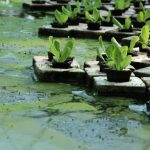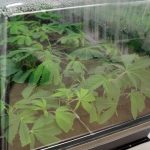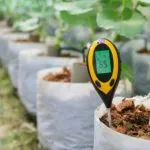Growing plants hydroponically has become increasingly popular amongst gardeners and farmers around the world due to its numerous benefits. However, to achieve optimal plant growth and health, it’s essential to master certain aspects of the process. One such critical aspect is knowing how often to change hydroponic water; this is not only key in ensuring nutrient absorption but also in preventing potential problems from arising.
How often to replace hydroponic water is a question that typically perplexes beginners venturing into this form of gardening or farming. It’s an essential component of maintaining a healthy hydroponic system, as it directly impacts the nutrient supply and overall health of your plants.
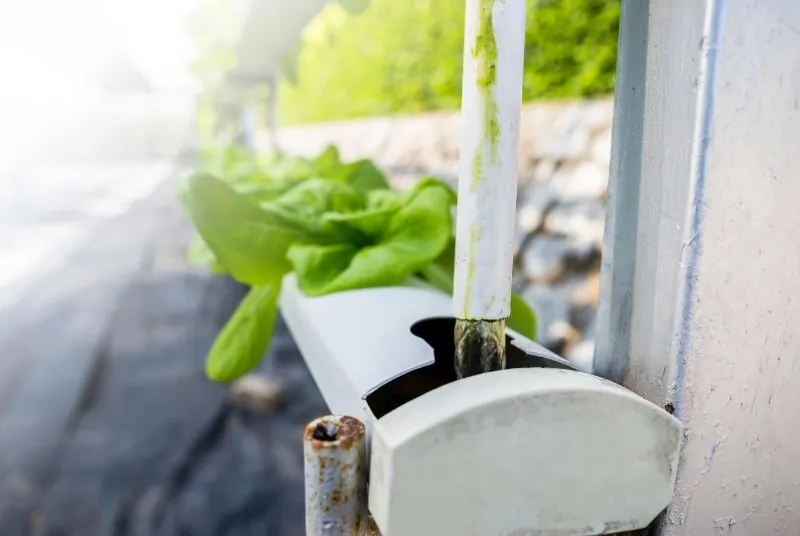
Inadequate or untimely changes can lead to various issues, including nutrient deficiency, root diseases, and even stunted growth. The balance between maintaining nutrients and clean water lies at the heart of successful hydroponics. Stay with us as we delve deeper into understanding this crucial practice for your hydroponic endeavor. We will discuss the factors that influence the frequency of water changes, the signs indicating the need for a change, and steps for properly changing hydroponic water.
Factors Influencing Water Change Frequency in Hydroponic Systems
Hydroponic gardening allows for optimal control over growing conditions. An essential aspect of these systems is the nutrient-rich water that feeds your plants. Even so, this water must be changed periodically to maintain plant health. The frequency of this task isn’t set in stone and can depend on a variety of factors.
Understanding Nutrient Depletion Rates
Plants in hydroponic setups get their nutrition directly from water, unlike their soil-grown counterparts. They absorb essential minerals like nitrogen, phosphorus, and potassium continuously as they grow. Over time, this leads to the depletion of nutrients in the water reservoir. As nutrient levels drop, you need to replace or replenish the water supply more frequently to keep up with plant demands.
The Impact of Plant Growth Stages
The growth stage of your plants plays a significant role in determining how often you should change your hydroponic water. Seedlings or young plants generally have lower nutrient requirements and therefore deplete nutrients at a slower rate compared to mature plants in full growth mode or flowering stage.
During the vegetative phase and blooming period, plants are voracious eaters—depleting nutrients swiftly from their environment. During these stages, regular monitoring of nutritional balance and ensuing frequent water changes become vital for good yields.
The Role of Water Temperature
Water temperature doesn’t just influence plant metabolic processes; it also affects the overall health of your hydroponic system by impacting algae and microorganism growth.
Warmer temperatures create an ideal breeding ground for such life forms—an occurrence you’d want to avoid since it competes with your plants for resources and can lead to disease outbreaks. Thus higher temperatures call for more frequent water changes to keep unwanted algae and microorganisms under control.
Related: Read our guide on maintaining an ideal hydroponic water temperature as well our guide on how to prevent algae from growing in hydroponics.
Importance of Oxygen Levels
Oxygen is critical in hydroponics! Plants require dissolved oxygen at their roots for respiration—a process essential for energy production.
If oxygen levels fall too low due to reasons like high root density or warm temperatures (which reduce oxygen solubility), root health can suffer—thus hindering nutrient absorption capabilities. By performing regular water changes, you help maintain healthy oxygen levels ensuring optimal root function and overall plant vitality.
Evaporation and Top Off
The process of evaporation in hydroponics systems can increase due to high temperatures, low humidity, wind speed, and the amount of exposure to air. As the water evaporates from your system, it leaves behind dissolved nutrients and salts. Over time, this can lead to an increase in nutrient concentration levels which may become harmful for the plants if not carefully managed.
The ‘top off’ method is commonly used to counteract evaporation in hydroponics systems. This technique involves adding water to the system to replace what has been lost due to evaporation. However, while topping off helps maintain the water level, it does not solve issues related to increasing nutrient concentration levels because it simply dilutes them temporarily.
It’s important for growers to understand that continued topping off without changing or refreshing the nutrient solution can create an imbalance over time as some nutrients may deplete faster than others depending on plant consumption rates. This could potentially hinder plant growth and yield.
Therefore, complete water changes alongside regular top offs are necessary for maintaining optimal conditions within your hydroponic system. By doing so, you can ensure the right balance of nutrients required for healthy plant growth while effectively managing issues linked with evaporation.
Signs Indicating the Need for a Water Change
So how can you tell when it’s time for a water change? Here are some signs.
Visual Cues for Hydroponic Water Replacement
Visual cues can often be the first indicator that there’s something amiss with your hydroponic system’s water supply. The appearance of murky or discolored water signifies contamination, potentially due to root rot or algae growth. Similarly, the presence of floating debris in the water may signify plant decay or pest infestation.
Another visual cue is slimy roots, an indication of pythium or other fungal infections, often caused by overwatering or poor oxygenation. In both cases, changing the water and cleaning the system can help restore optimal growing conditions.
pH Imbalance as an Indicator for Water Change
The pH level in a hydroponic setup is crucial for maintaining plant health, as it impacts nutrient availability. Sudden fluctuations in pH levels can hinder nutrient absorption, leading to deficiencies and sub-optimal growth. If you notice significant pH swings despite regular buffering, this could indicate issues such as chemical buildup from nutrients or problems with your water source. In turn, this signals a need to change your hydroponic water.
Related: Read our guide on how to adjust water ph for plants in a hydroponic system.
Monitoring EC Levels: A Key Factor in Hydroponics
Electrical Conductivity (EC) measurements offer insights into the number of dissolved salts – nutrients – present in your solution. As plants absorb these nutrients, EC levels decrease; conversely, if you’re adding too many nutrients without proper uptake by plants, EC levels rise.
Monitoring these changes is paramount, as drastic shifts can lead to nutrient burn or deficiency impacting plant health adversely. Therefore if EC readings fall below or exceed optimal thresholds consistently despite adjustments to nutrient inputs, it may be time for a complete water change in your hydroponics system. You can learn more about ideal EC for hydroponics here.
General Guidelines for Changing Hydroponic Water
Understanding the appropriate frequency of changing water in a hydroponic system is crucial to maintaining an optimal environment for plant growth and keeping hydroponic water clean. Each stage of plant development may require different frequencies, and various hydroponic systems also demand specific considerations. Moreover, sticking to a consistent water change schedule ensures your plants’ health and productivity.
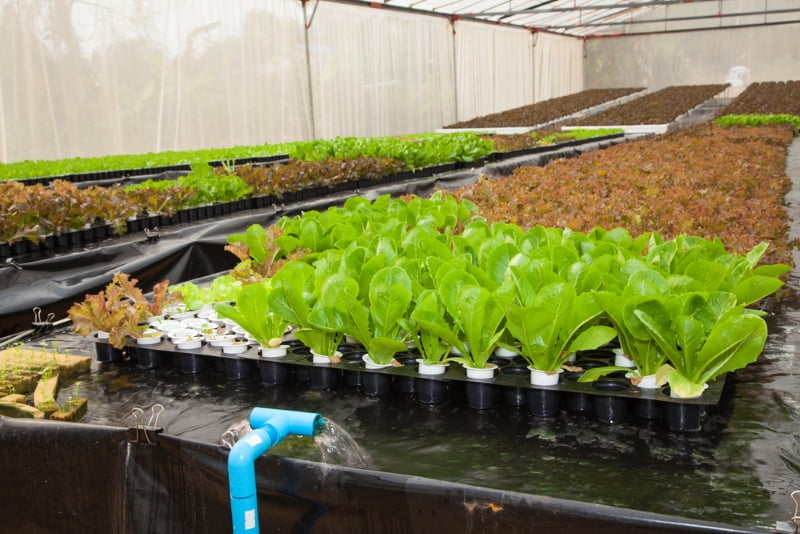
Full Water Change
A full water change involves completely draining the nutrient solution from your hydroponics system and replacing it with fresh water and nutrients. This is often done every two to four weeks, depending on your system size, type of plants, their growth stage, and the overall health of your system.
A complete water change offers several benefits including:
- Nutrient Balance: Over time, plants absorb different nutrients at different rates, leading to an imbalance in the remaining solution. A full change allows for a fresh start with balanced proportions.
- Removal of Waste: Plant roots may shed dead cells and other detritus can gather in the nutrient solution over time; a full water change removes this waste, reducing potential decay or disease.
- Control of Salt Build-Up: Over prolonged periods, salts from fertilizers can accumulate in your system, potentially damaging plant roots if left unchecked. Regularly replacing all the water helps to control this build-up.
However, full changes are more labor-intensive and can be stressful for plants if done too frequently. We have an extensive guide on how often to clean a hydroponic system as well as how to flush it when needed.
Partial Water Change
Partial water changes involve removing a part — usually about 10-20% — of the old nutrient solution and replacing it with fresh nutrient-rich water. These are typically conducted weekly but may vary based on factors similar to those affecting full changes.
Partial changes offer a less disruptive way to maintain nutrient balance while reducing waste buildup:
- Consistent Nutrient Levels: By changing smaller amounts more frequently, you can ensure plants consistently have access to all necessary nutrients without dramatic shifts.
- Less Stressful for Plants: Less drastic changes mean there’s less chance of shocking or stressing your plants.
- Reduced Labor: Partial changes require less work than full ones.
Keep in mind that while partial changes reduce salt build-up compared to no changes at all, they’re not as effective as full changes for this purpose.
Frequency Recommendations Based on Plant Growth Stage
Different stages of plant growth have varying nutrient and oxygen needs, which impact how often you should change your hydroponic water.
Seedling Stage: Establishing Strong Roots
In the seedling stage, it’s essential to keep conditions stable to help form strong roots. Small fluctuations in pH or nutrient levels can harm young plants. During this stage, aim to replace the water every two weeks to maintain stability while ensuring nutrients are not depleted.
Vegetative Stage: Maintaining Vigorous Growth
During the vegetative stage, plants experience vigorous growth and thus consume more nutrients and oxygen from the water. In this phase, consider changing your hydroponic water at least once a week to replenish essential nutrients and boost oxygen levels.
Flowering Stage: Supporting Blooming Process
The flowering stage is when plants reach maturity and start blooming. This phase requires fewer nutrient changes but still needs careful monitoring. Generally, changing the water every 10 days is favorable for supporting the blooming process without causing stress from drastic environmental shifts.
How Often Should Hydroponic Water Be Changed for Different Systems?
The type of hydroponic system you’re using notably impacts how frequently you need to change your water.
Deep Water Culture (DWC): Regular Refreshment Needed
Deep Water Culture systems involve keeping plant roots submerged in nutrient-rich water at all times. Given the constant exposure, DWC systems lose water through evaporation and the DWC water level will need topping off. They generally need refreshing every week to prevent harmful bacteria buildup and ensure ample nutrient supply.
Nutrient Film Technique (NFT): Less Frequent Changes
In Nutrient Film Technique systems, a thin film of nutrient solution flows over exposed roots in a sloped trough. Due to its design where water consistently circulates, NFT doesn’t require as frequent changes—generally around every two weeks will suffice.
Ebb and Flow: Depends on Plant Size
Ebb and Flow systems utilize periodic flooding followed by drainage allowing recovery time for oxygen uptake by roots. The frequency can depend on plant size — smaller plants may get by on bi-weekly changes while larger ones might benefit from a weekly schedule due to their higher nutrient uptake rate. You can learn more about an ebb and flow hydroponics watering schedule in our extensive guide.
Importance of Maintaining a Consistent Water Change Schedule
Keeping a regular schedule for changing hydroponic water plays an integral part in optimizing growing conditions. Consistency helps maintain balanced nutrients levels while preventing any build-up that could lead to root diseases or other problems that might impede plant growth or cause failure within your system.
Can You Reuse Hydroponic Water?
Yes, hydroponic water can be reused, but with caution. This practice is referred to as recirculating hydroponics.
Here are some important points to consider when implementing a recirculating hydroponic system with no water change:
- Nutrient Balance: The water’s nutrient concentration changes as plants absorb different nutrients at different rates. You need to monitor and adjust nutrient levels regularly.
- pH Level: Keep an eye on the pH level of your solution. Ideal pH levels for most hydroponic systems range between 5.5 and 6.5.
- Pathogens: Reused water can harbor plant diseases and pests, which can spread quickly in a hydroponic system if not monitored closely.
- Water Quality: Ensure that the water quality remains high. Over time, elements like salts may build up in the water, which could harm your plants.
To reuse hydroponic water effectively, you should have a good understanding of plant nutrition and disease management. Regular testing and adjustments are crucial to maintain a healthy environment for your plants.
Step-by-Step Guide: How to Change Hydroponic Water
Knowing how to maintain your hydroponic system, specifically how often to change water for plants growing in water along with their nutrients, is vital. Here is your step-by-step guide on changing hydroponic water.
- Gather Necessary Equipment and Materials
- Start by gathering all necessary tools and materials, which typically include a drainage pump, clean buckets or containers for temporary storage of plants and fish (if applicable), pH and EC meters, fresh water, nutrient solution, cleaning agents (preferably non-toxic), gloves, and safety glasses.
- Drain Your Hydroponic System
- Initiate the process by carefully draining the old water from your system using a submersible pump to ensure efficient drainage without disturbing plants or fish.
- Reservoir and Component Cleaning
- After all the water has been drained, clean the reservoir and other components of your system to remove any biofilm or algae build-up that could compromise plant health. Use non-toxic cleaning agents for safety purposes.
- Preparing Fresh Nutrient Solution
- Prepare a fresh batch of nutrient solution following specific guidelines provided by nutrient manufacturers or experienced hydroponics practitioners.
- Refilling with Fresh Water and Nutrients
- Refill your system with fresh water before adding in the newly prepared nutrient solution; this step creates an essential environment for optimal plant growth.
- Adjusting pH and EC Levels
- After refilling the systems, adjust pH & EC levels as per requirements; aim for a 5.5-6.5 pH range while ensuring proper EC levels according to specific plant needs when growing most plants in hydroponics systems.
- Restarting System & Monitoring Issues
- Upon ensuring everything else is satisfactory, restart your system then monitor it for leaks or other issues that might have occurred unnoticed during maintenance work.
Best Practices for Maintaining Clean Water in Hydroponics
When it comes to hydroponics, maintaining clean water is critical for plant health and growth. It involves regular monitoring of key factors, applying effective filtration methods, ensuring balanced nutrient feeding, and prompt airflow and ventilation management. If you’re diligent about these practices then you won’t need to change the water in your hydroponic system too frequently and you can combat common issues like algae growth and Nutrient imbalances or deficiencies. Here are some best practices to implement.
Regularly Monitor pH, EC, And Temperature Levels
In a hydroponic system, the quality of the water greatly influences plant growth. To ensure optimal conditions for your plants, it’s crucial to regularly monitor the pH, Electrical Conductivity (EC), and temperature.
The pH level plays a significant role in nutrient absorption by plants. A slightly acidic environment (around 5.5 – 6.5 pH) is ideal as most nutrients are in their most absorbable state at this range.
Electrical Conductivity (EC) measures the nutrient density in your solution. High EC levels indicate excessive nutrients which can cause root damage or stunted growth while low levels can result in nutrient deficiencies.
As for temperature, keep it between 65°F and 70°F as these conditions allow good oxygen dissolution important for root respiration.
Use Appropriate Filtration Methods
To remove impurities from your hydroponic system’s water supply, use appropriate filtration methods such as carbon filters. These filters effectively screen out contaminants like chlorine and other volatile organic compounds which could negatively affect plant growth or introduce harmful pathogens into your system.
Avoid Overfeeding Or Underfeeding Your Plants
Maintaining a balanced diet is as important for plants as it is for humans! Overfeeding can lead to nutrient toxicity whereas underfeeding can result in nutrient deficiencies – both detrimental to plant health. Regularly check the EC levels to ensure that plants receive an adequate amount of nutrients without reaching toxic limits.
Maintain Proper Airflow And Ventilation In Your Hydroponic Setup
Airflow and ventilation play vital roles in maintaining healthy water conditions in a hydroponic setup. Proper airflow ensures sufficient oxygenation of your nutrient solution preventing root diseases related to oxygen deficiency known as ‘root rot.’ Meanwhile, good ventilation helps control humidity levels within the grow area reducing chances of mold development and pest infestation.


